
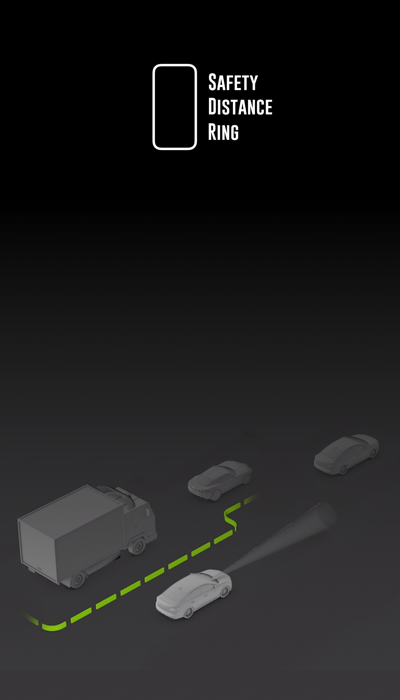
Safety Distance Ring
A companion app for G-Suite admins to do administration on-the-go.
Role : Research & Design | Duration : 4 weeks | Individual
Objective :
To choose one daily life activity and come up with a solution based on ubiquitous computing or calm computing.
INTRODUCTION
As part of a daily life activity, driving was chosen for this project. Driving is one of the most common daily activity for urban people and yet, the scenario of driving in India is not convinient. Due to lack of following traffic rules, poor training and other various reasons, driving has proved to be fatal. It is second major reason of deaths in India. Therefore, in this project I tried to focus on the problem areas in driving and how some of the issues can be solved using ubiquitous computing.
RESEARCH
I took a qualitative approach to understand and identify problems in a daily activity. This approach gave me deeper insight into problems we usually ignore on daily basis. I discoverd new set of problems exist on roads where there is mixed traffic. Such scenarios are very common in India and other south asian countries. I approached via following two ways-
1. Personal Interviews
2. Observational Method
Personas
I interviewed 10 people who varied in driving skills from advanced to novice.
The questionnaire targeted finding out problems based on-
1. Safety Distance 2. Vehicle-Vehicle Communication 3. High Risk Zones
Based on the insights I formed three personas in age group 20-30 years with different levels of diving skills and choice of interest in driving.

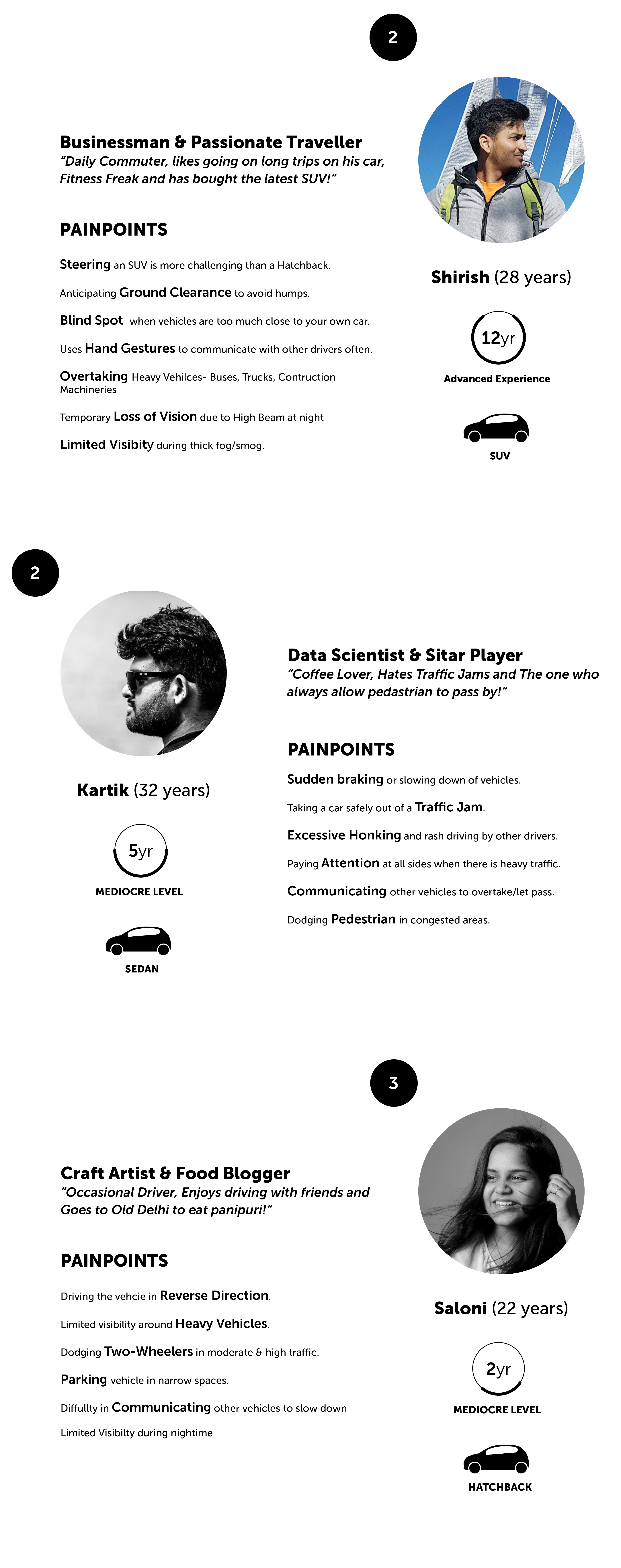
Key Findings
I tried to classified the key-findings based on the mode of conveying the information. Based on how put our attention in perceiving an informationn, it is classified in following two categories :
1. Peripheral Information (Notification)
Information in the periphery of the user, but requires her attention to interpret it. Eg. time, screen notifications
2. Peripheral Display Information (Proximity)
Information which appears in our peripheral vision and can be interpreted without looking at it directy. Eg. notification light in smartphones..
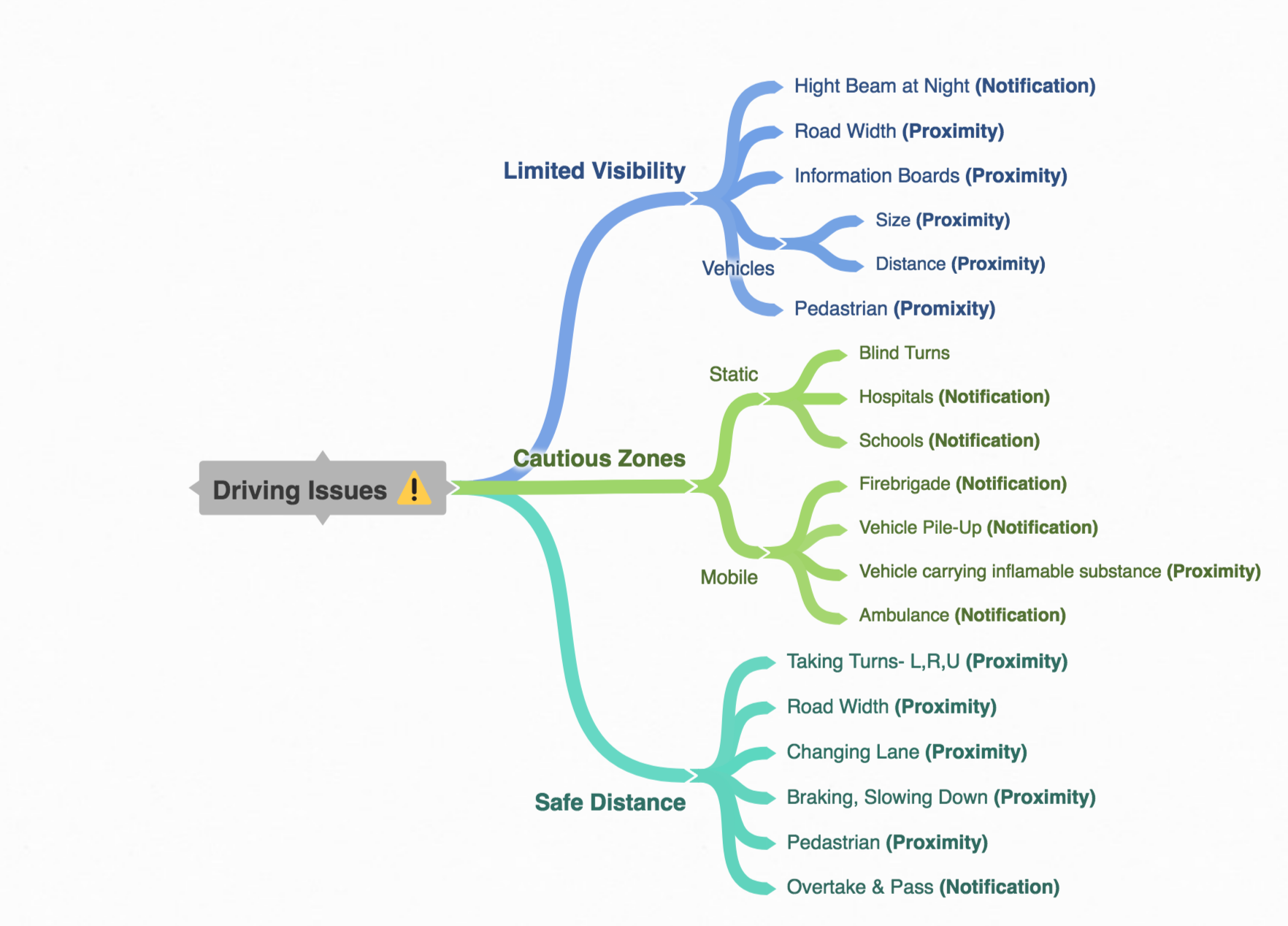
The issue of Safety Distance in Mixed traffic
From the research, the issues of maintaining safety distance leads to anxiety and stress while driving. This issue arises due to the mixed-traffic condition on Indian Roads. Due to poor management and control by authorities, vehicles usually don’t follow the safety distance rule and instead try to overtake which might lead to fatal accidents. This kind of driving might also hurt the pedastrian who are walking on the roads.
The research also highlighted this issue is noticable amongst the new drivers but the experienced drivers have got used to it. Due to this reasons, this has become a habit and is extremely difficult to change by enforcing just traffic rules.
The picture below depicts a typical scenario of a busy street with mixed-traffic.
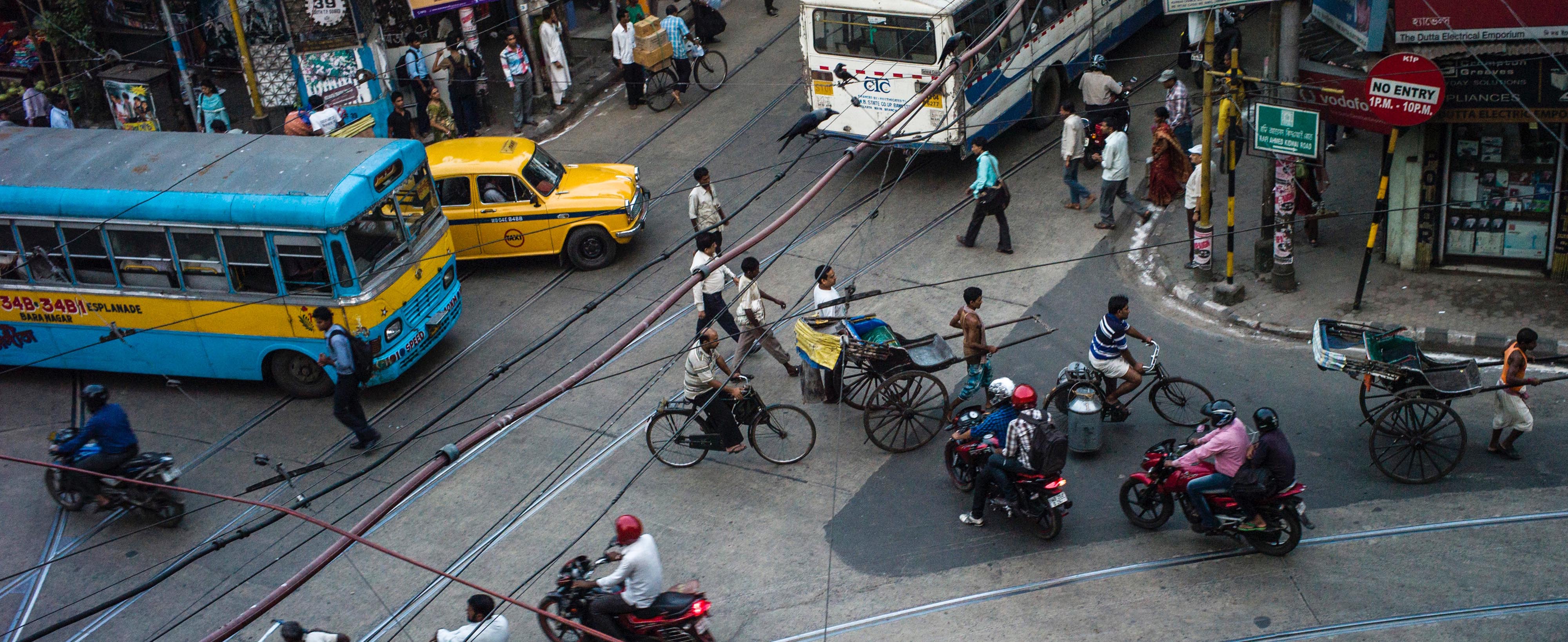
Image: A busy crossing at Esplanade, Kolkata ; Source: Unknown
Scope of Work
Safety Distance is one of the major issues in mixed-traffic. Pedastrian and Two-wheelers are at higher risk and the situation worsens during night. The risk of hitting can be reduced if the driver can be notified or warned against breaking the safety distance. Here lies the biggest challenge about how to notify a driver when he is still driving.
Understaning Human Vision to decide design parameters :
For designing such a solution, it was necessary to understand how we use our vision during driving. From "blah blah paper", I came to know that a human uses both her peripheral and foveal vision to ancipate the obstacles and other vehicles on the road. THerefore I studied merits and shortcomings of both vision and tranformed them into my groundrules for the design.
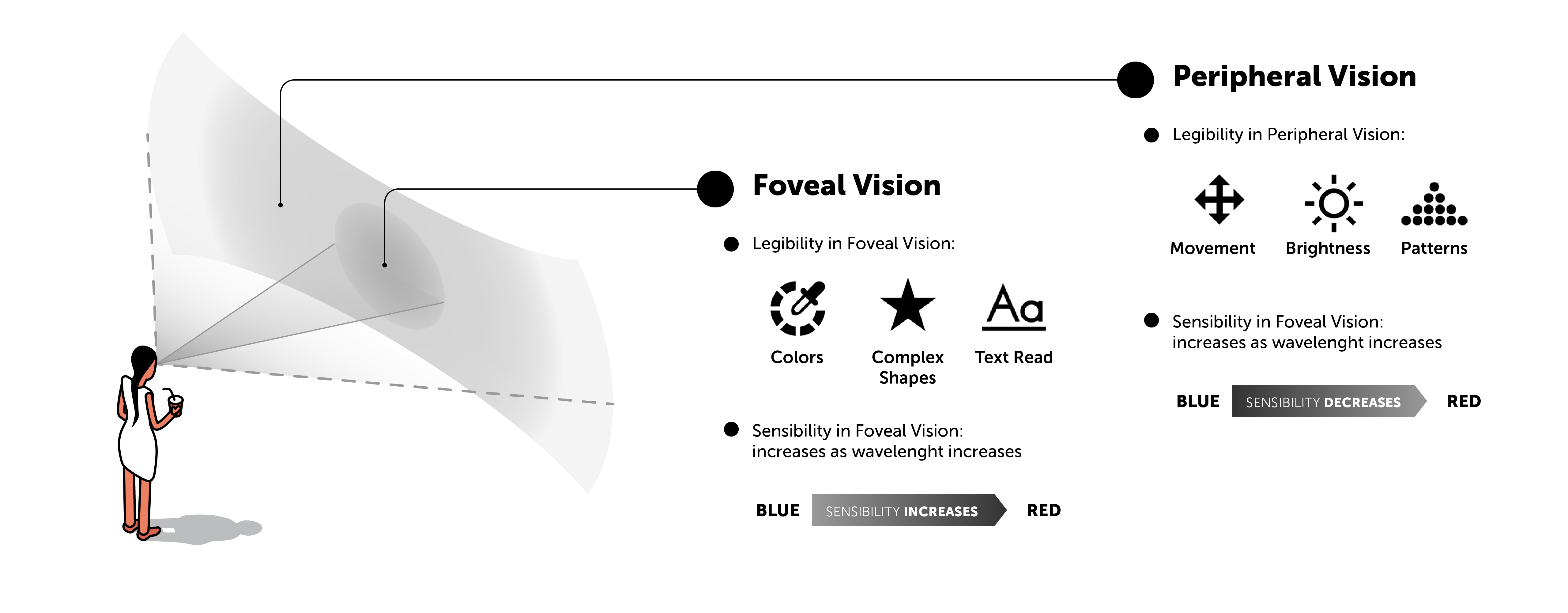
Scope for Perifoveal Display
Data is visualised based on user’s viewing direction. Data in central vision is displayed in detail. Data which lies in peripheral vision are highlighted by movement and change in brightness as well as amount of detail and size. This concept of perifoveal display can be helpful in case of driving. Information can be prioritised and placed in foveal and peripheral vision respectively.
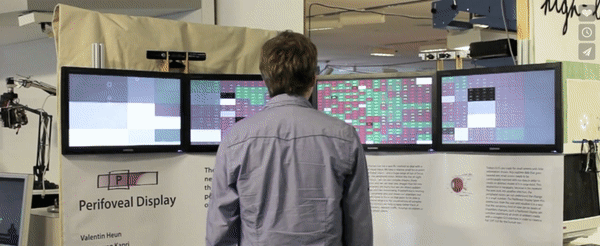
source : Perifoveal Display: Combining Foveal and Peripheral Vision in one Visualisation
BRIEF
Designing a perifoveal interface to alert the driver to maintain safety distance, and other notifications without distracting her from driving.
DESIGN
The design solution can be found in a scenario where everything around us is a smart object. All the cars are connected with each other and they are aware of their location and nature of their surrounding. Therefore all the vehicles, people, transport facilites and buildings are a part of a big IOT systems and this scenario is called Connected Cars
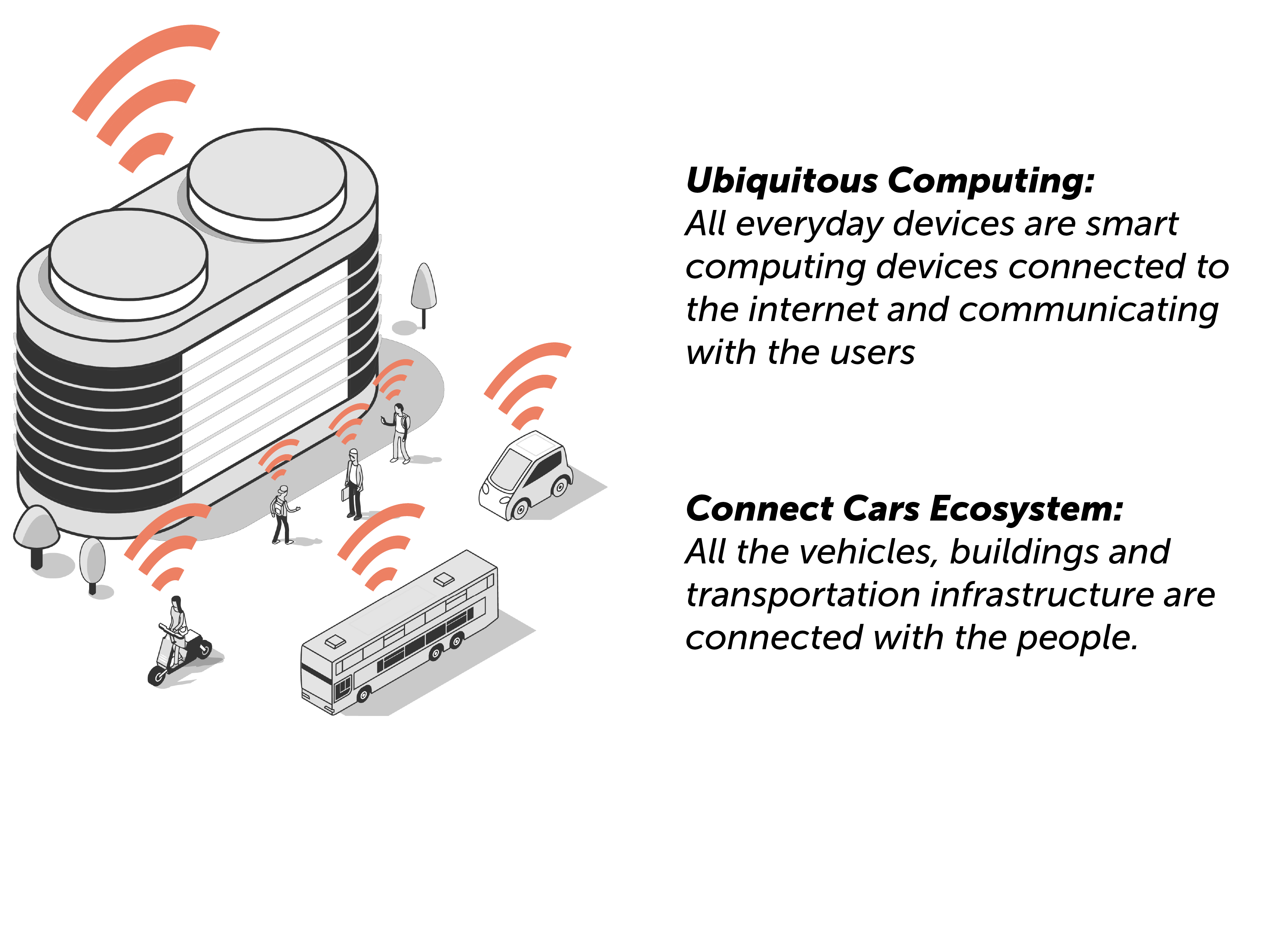
Concepts
I tried to conceptualize as a physical or a virtual device. I found challenge in augmented reality medium because we see and perceive images in our foveal and peripheral vision differently. Therefore, I moved forward with the Concept-3 and found a scope to define how information can be shown in our physical world without distracting our attention all the time.
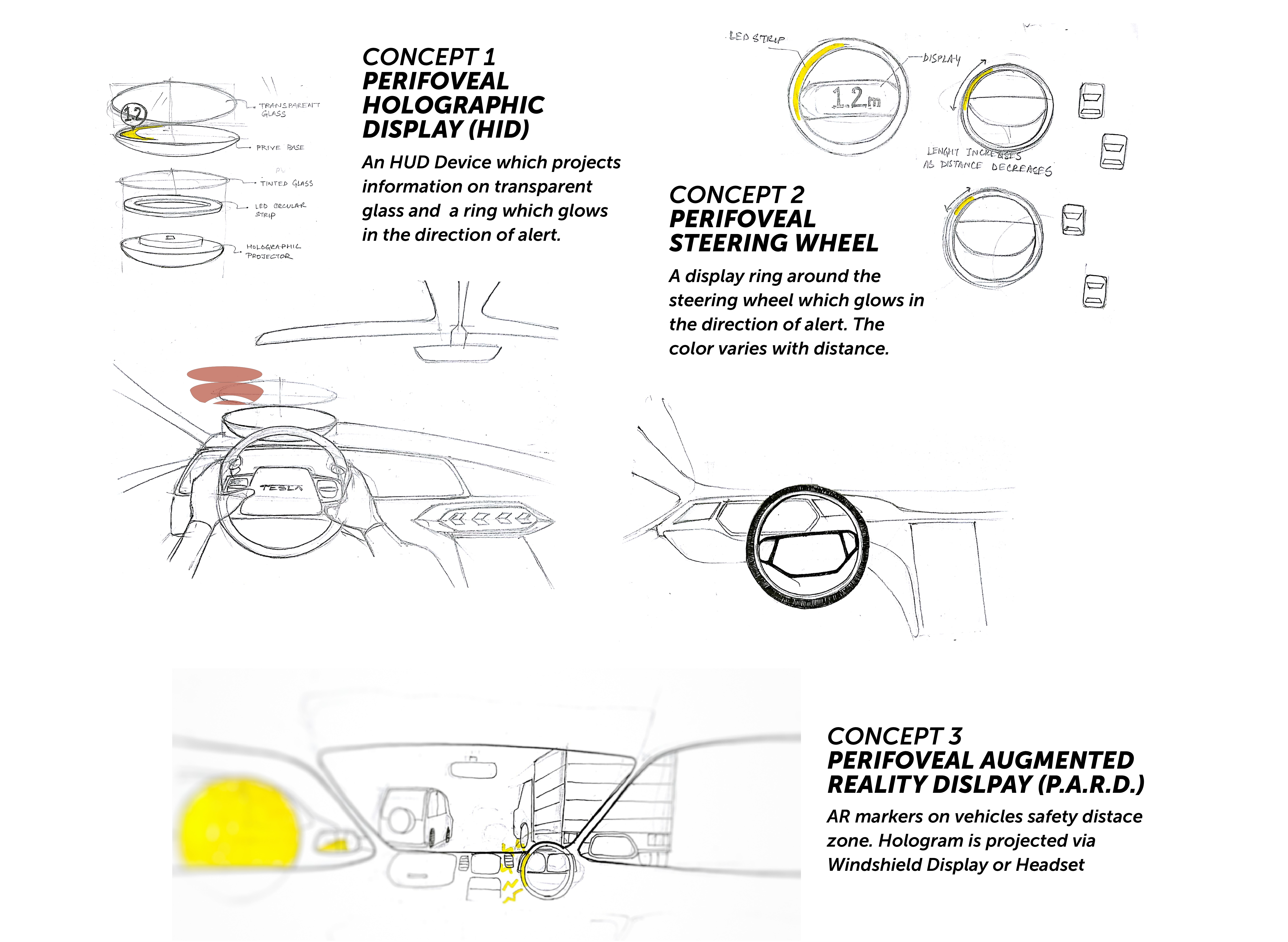
Design through Scenarios
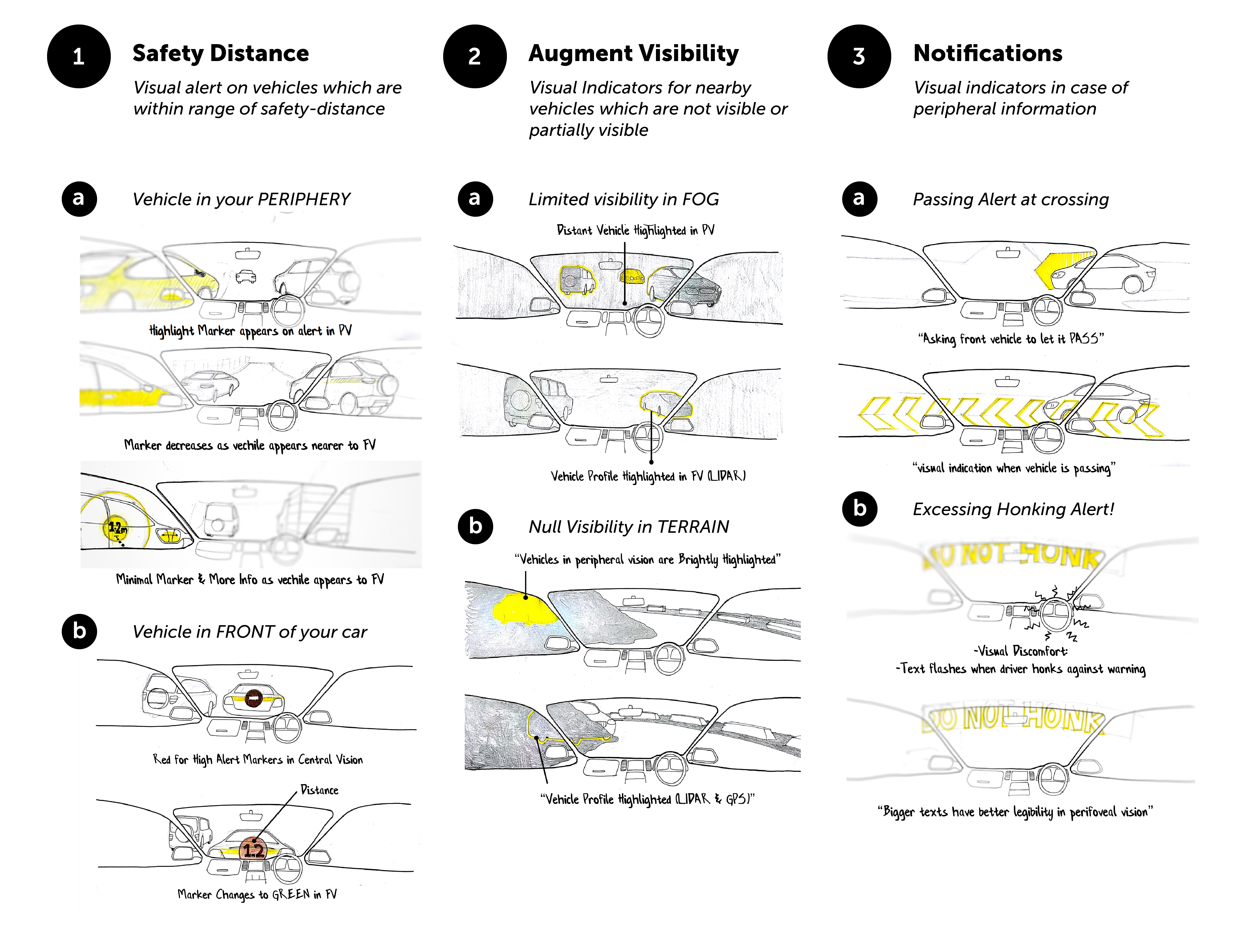
Sketching behaviour of safety markers in different SCENARIOS

Exploring the visuals for safety markers

Source: My notes on Safety Distance Ring
SAFETY DISTANCE RING
Safety Distance Ring or SDR is a Driving Assistant based on Perifoveal Augmented Reality Display. The complexity of information changes based on focus of eye.
1. Minimal User Interface
For minimal interference with the physical surroundings to avoid distraction in driving.
2. Hardware
The interface can holographically projected via windshield HUD display or AR headsets.
3. Connective Cars
The information is shared in real-time with all the cars on road.
The Interface
3D RING
for perception of distance. The ring appears around the surrouding vehicles when the relative distance becomes less than safe distance (0.2seconds).
Rhythm
Motion that syncs with the speed of the user's vehicle and appears moving in opposite direction of vehicle's movement
Colors
SDR turns Yellow and Green when viewed in Peripheral and Foveal Vision. SDR turns RED when the front vehicles apply brakes.
Designing Interactions
Scenario 1:
SDR appears on nearby vehicles when the user vehicle crosses the safe relative distance range.
Scenario 2:
The SDR expands or contracts depending upon the safety distance calculated from the relative speed of nearby vehicles.
Scenario 3:
When the driver comes at an alarming close relative distance, SDR changes its rhythm and color to alert the driver in the periferal vision area.
Scenario 4:
Perifoveal behaviour allows SDR to change its appearance color based on its presence in the driver's vision ie. central or peripheral
Scenario 5:
SDR changes its color to red in the centeral vision, when the front vehicle applies brakes.
Scenario 6:
In mixed-traffic conditions, multiple sdr of nearby vehicles can club together to indicate the safety distance zone near the traffic.
Video Prototype
I created a video for an experiential prototype. But due to limitation on screensize the vision is restricted and everything appears on focus. Therefore I have decided to create an interactive virtual reality environment where I can simulate the experience in a virtual environment. The viewers can visually interact with the Safety Distance Ring based on their point of focus inside VR.
The final prototype is a work in progress.
THANK YOU FOR READING